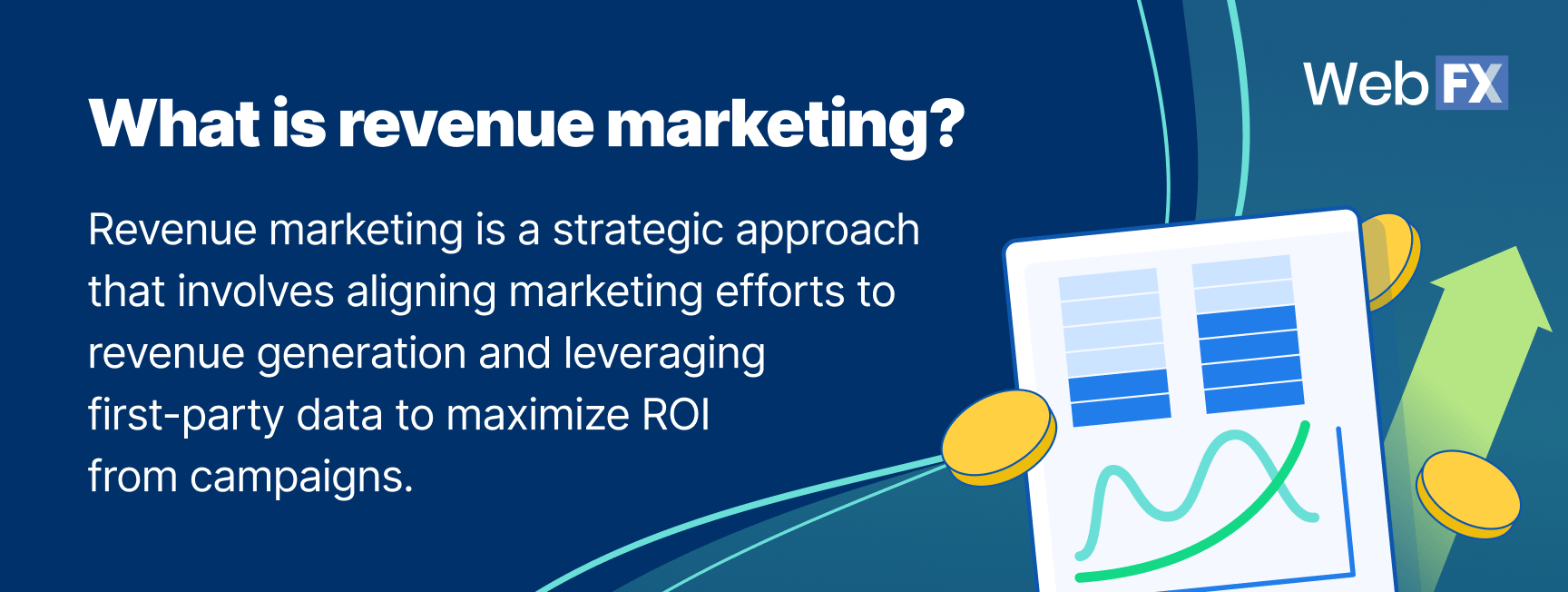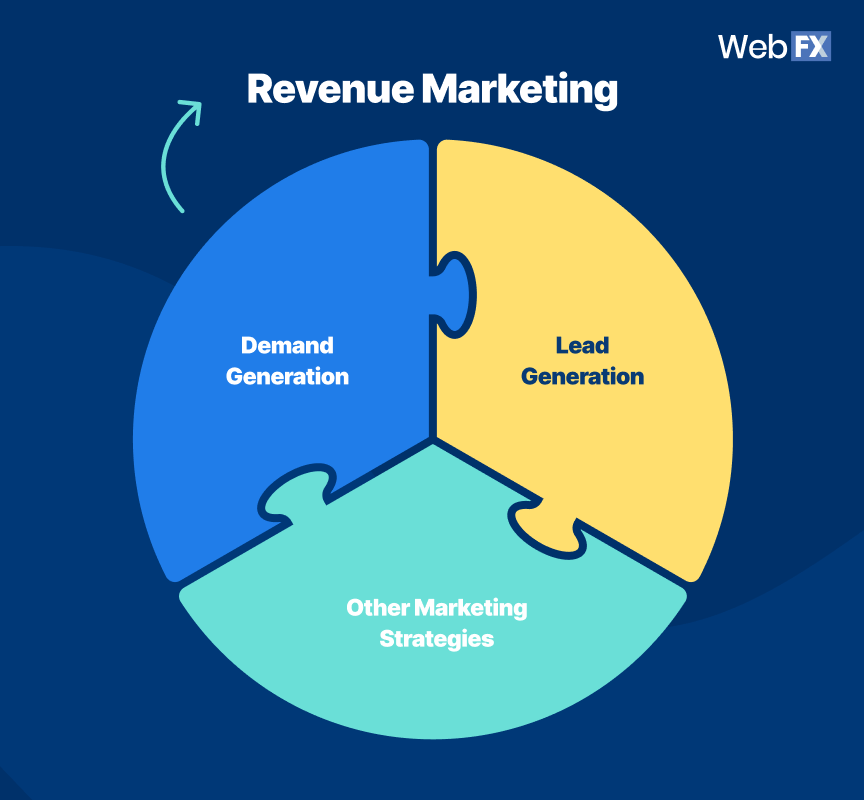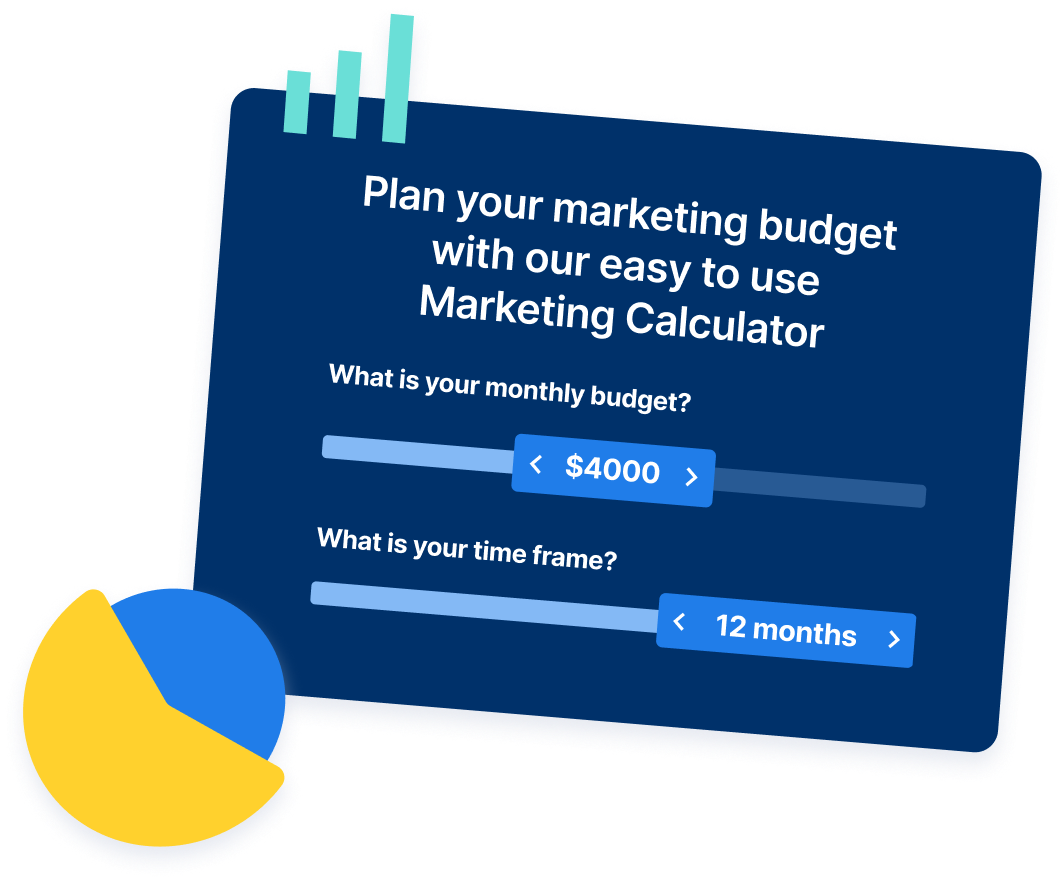-
 Published: Oct 29, 2024
Published: Oct 29, 2024
-
 7 min. read
7 min. read
-
 Maria Carpena
Maria Carpena Emerging Trends & Research Writer
Emerging Trends & Research Writer
- Maria is an experienced marketing professional in both B2C and B2B spaces. She’s earned certifications in inbound marketing, content marketing, Google Analytics, and PR. Her favorite topics include digital marketing, social media, and AI. When she’s not immersed in digital marketing and writing, she’s running, swimming, biking, or playing with her dogs.
Key takeaways
- Revenue marketing is a holistic marketing approach that uses demand generation, lead generation, and other methods to grow your revenue.
- Revenue marketing, demand generation, and lead generation have differences and similarities.
Marketers are flooded with strategy buzzwords, and it can be overwhelming to keep up with them all.
If you’ve come across the terms revenue marketing, demand generation, and lead generation, you may wonder how different they are from one another. You may even be wondering if you should prioritize one over the others.
Keep reading to understand each one, their differences, and how they can grow your bottom line:
- What is revenue marketing?
- What is demand generation?
- What is lead generation?
- Revenue marketing vs. demand generation vs. lead generation: What are their differences and similarities?
What is revenue marketing?

Revenue marketing is the process of using various marketing strategies and channels to generate sales and reach your revenue goals.
It uses different marketing strategies, including inbound marketing, demand generation, and lead generation. Revenue marketing aims to implement effective and efficient marketing campaigns that acquire and retain customers to grow your revenue.
This strategy ties your marketing efforts to your revenue goals. Aligning your marketing and sales teams is critical to successful revenue marketing.
🎥 Video: What is revenue marketing?
How will you know if your revenue marketing strategy is driving sales?
Revenue marketing uses data and analytics to measure your campaigns’ results. Data and analytics also uncover opportunities for revenue growth and identify which channels drive sales.
You can also track the following key revenue marketing metrics that contribute to revenue growth:
| Revenue marketing metric | Description |
| Sales qualified leads (SQLs) | Prospects your sales team has considered potential customers based on their interactions with your business. |
| Deals or customers acquired | The number of customers you’ve obtained in your funnel. |
| Closed deals | The number of deals you’ve closed in your pipeline. |
| Average deal size | The average amount of money a customer spends on your offering. |
| Average sales cycle length | The average time a prospect takes to become a customer after their initial interaction with you. |
| Customer lifetime value (CLV) | The revenue you can expect from a customer throughout your relationship. |
| Predicted revenue | Estimated revenue you will make in a certain period. |
| Marketing-attributed revenue | The amount of revenue associated with your marketing efforts. |
| Monthly recurring revenue (MRR) | The monthly revenue you get through your offerings. |
What is demand generation?
Demand generation is a strategy that focuses on helping your prospects identify their pain points and search for your offerings as a solution.
It aims to create demand among your target audience, which will lead them to become interested in your offerings and check out your business.
Demand generation uses various marketing methods, such as the following:
- Content marketing: A strategy that creates and distributes relevant content to attract, engage, and convert your prospects.
- Search engine optimization (SEO): Optimizing your website to rank in relevant searches.
- Account-based marketing (ABM): A B2B marketing tactic that creates personalized and targeted campaigns for specific accounts or customers.
- Social media marketing: A method that uses various social media platforms to promote your content, brand, and offerings.
- Email marketing: A strategy that uses email to send relevant content and promotions to customers and prospects who opted in to receive your emails.
Demand generation is a piece of your overall revenue marketing effort because it generates interest in your offerings. Effective demand generation, coupled with other marketing efforts, can help drive revenue.
Your demand generation campaigns are typically top-of-the-funnel (TOFU) activities. However, you may still find them in the middle of the funnel (MOFU) and bottom of the funnel (BOFU).
Keep your prospects interested in your brand and offerings in the MOFU stage through demand generation by engaging them with educational content like how-to’s and case studies. Generating demand in the BOFU stage may include techniques like retargeting ads and personalized emails.
What is lead generation?
Lead generation is a set of techniques that nurtures your prospects to convert into customers. It usually collects information from your prospects so that your sales team can reach out and close the deal.
Like demand generation, lead generation is essential to your revenue marketing strategy. Optimized lead generation campaigns can convert qualified leads into customers and increase your revenue.
Common lead-generation tactics that businesses can employ are:
- Creating gated content
- Offering a free trial
- Emailing relevant offers
- Running pay-per-click (PPC) ads targeting your prospects
Demand generation vs. lead generation
Demand and lead generation are closely related tactics. Demand generation focuses on creating interest in your products or services among your target audience. Meanwhile, lead generation aims to nurture your target audience to convert into customers.
Revenue marketing vs. demand generation vs. lead generation: Differences and similarities
Now that we’ve discussed each strategy, let’s clearly define their differences, similarities, and how they all work together to grow your business.

Revenue marketing is a holistic approach that aims to implement effective marketing campaigns that generate revenue.
Think of revenue marketing as a finished puzzle. Meanwhile, demand generation and lead generation are two unique pieces of the puzzle (among other pieces of strategies).
Demand generation sparks interest in your products and services as it helps your audience realize their pain points and seek your offerings. Another piece of the revenue marketing puzzle is lead generation, which is focused on collecting and nurturing prospects to convert into customers.
Differences
Let’s dissect the differences between revenue marketing, demand generation, and lead generation in marketing. They differ according to their focus and key metrics.
The table below summarizes their differences:
| Focus | Key Metrics | |
| Revenue marketing | – Generate revenue – Align marketing and sales teams to make the most of marketing spend |
– Predicted revenue – Marketing-attributed revenue – Monthly recurring revenue |
| Demand generation | – Spark interest – Create awareness |
– Website traffic – Social media reach and impressions |
| Lead generation | – Collect prospects’ information – Convert prospects into customers |
– Lead quality – Cost per lead |
Similarities
In the discussion of revenue marketing vs. demand generation vs. lead generation, it’s important to note that they share similarities, such as:
- They require that you understand your customers and their needs
- They all need marketing tools to implement and optimize campaigns effectively
- They use inbound marketing techniques
Let’s discuss each one:
They require that you understand your customers and their needs
All three strategies require businesses to have a deep understanding of their customers. To create demand for your products and services, you must know your target audience well enough to identify their pain points even before they realize them (demand generation).
You must also know the marketing messages that resonate with them to run a successful lead-generation campaign. Finally, personalized messages convert your different buyer personas into customers, increasing revenue.
They all need marketing tools to optimize campaigns
Monitoring and analyzing your campaigns’ performance is key to finetuning your strategy. Demand generation, lead generation, and revenue marketing need data and analytics to measure campaign results.
Marketing tools like RevenueCloudFX can attribute leads and sales to your campaigns. You can measure your strategies’ success and identify which channels drive the most revenue.
These tools also help you better understand your audience so you can better segment them and personalize their experiences, leading to better conversions.
They all use inbound marketing strategies
Inbound marketing strategies are essential for revenue marketing, demand generation, and lead generation.
Inbound marketing attracts your target audience to your business. Its methodologies delight your prospects, who are drawn to interact with and purchase from you.
Implementing inbound marketing methods can generate demand and increase your leads. As a result, you’ll also potentially grow your revenue.
Our digital marketing campaigns impact the metrics that improve your bottom line.
See Our Approach
$10 billion

24 million

7.14 million
Turbocharge your bottom-line growth with revenue marketing experts
Understanding the differences between revenue marketing, demand generation, and lead generation is the first step toward growing your bottom line. If you want to run marketing campaigns that grow your revenue, consider partnering with WebFX.
Our team of 500+ experts has generated over $10 billion in revenue for our clients. We’d be glad to drive the same results for your business using demand generation, lead generation, and other strategies for your company.
You’ll get access to RevenueCloudFX, a proprietary tool powered by artificial intelligence (AI). This tool will provide billions of data points and customer insights so you can make informed strategic decisions.
Let’s work together to boost your revenue. Contact us online or call us at 888-601-5359 to speak with a strategist!
-
 Maria is an experienced marketing professional in both B2C and B2B spaces. She’s earned certifications in inbound marketing, content marketing, Google Analytics, and PR. Her favorite topics include digital marketing, social media, and AI. When she’s not immersed in digital marketing and writing, she’s running, swimming, biking, or playing with her dogs.
Maria is an experienced marketing professional in both B2C and B2B spaces. She’s earned certifications in inbound marketing, content marketing, Google Analytics, and PR. Her favorite topics include digital marketing, social media, and AI. When she’s not immersed in digital marketing and writing, she’s running, swimming, biking, or playing with her dogs. -

WebFX is a full-service marketing agency with 1,100+ client reviews and a 4.9-star rating on Clutch! Find out how our expert team and revenue-accelerating tech can drive results for you! Learn more
Try our free Marketing Calculator
Craft a tailored online marketing strategy! Utilize our free Internet marketing calculator for a custom plan based on your location, reach, timeframe, and budget.
Plan Your Marketing Budget

Proven Marketing Strategies

Proven Marketing Strategies
Try our free Marketing Calculator
Craft a tailored online marketing strategy! Utilize our free Internet marketing calculator for a custom plan based on your location, reach, timeframe, and budget.
Plan Your Marketing Budget
What to read next





